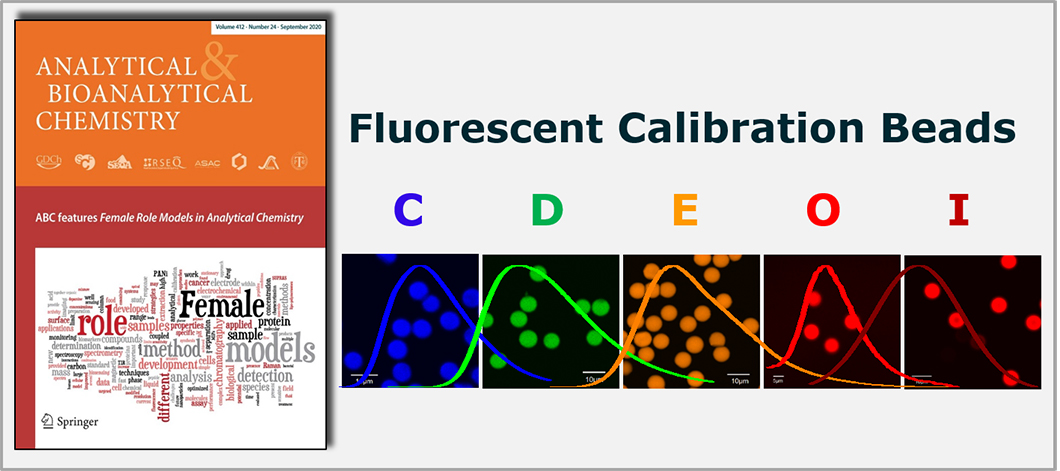
Three female BAM scientists show calibration beads for fluorescence techniques in a special issue: "Female Role Models in Analytical Chemistry" published in ABC
Source: BAM, division Biophotonics
All fluorescence-based methods produce signals that are a sum of the sample fluorescence and instrument-specific inputs. This limits the comparison of the spectroscopic data obtained on different instruments and even on the same device over time due to aging of instrument components. This is also true for fluorescence microscopy and flow cytometry (FCM), that present the most widely used fluorescence techniques in the life sciences. Especially for analytical techniques used in the life sciences, medical diagnostics, and pharmaceutical research a device calibration and performance validation for comparable and quantitative measurement results are needed. This has meanwhile initiated vivid activities worldwide by scientists from core facilities, imaging networks, and standardization organizations to improve the comparability of fluorescence measurements.
To meet these trends, three female scientists of division Biophotonics recently published an article on the design and characterization of a new set of fluorescence standards in the scientific journal Analytical & Bioanalytical Chemistry. This article is one of 62 selected articles for the special issue on “Female Role Models in Analytical Chemistry” intended to enhance the visibility of female scientist in bio- and material analysis. For the development of a set of spectral calibration beads, polymer beads were loaded with dyes from the Calibration Kit Spectral Fluorescence Standards which were developed and certified by BAM for the determination of the wavelength-dependent spectral responsivity of fluorescence measuring devices. To cover the visible wavelength region from 400-800 nm two additional NIR-dyes were used after spectroscopic characterization. The results of this study present a first set of particulate spectral calibration standards and reference materials for the determination and correction of the spectral characteristics of fluorescence instruments. Thereby, the new calibration beads address the emerging interest of the fluorescence microscopy and flow cytometry community in spectral information. With these fluorescent beads and different types of fluorescent nanoparticles under development as reference materials, the toolbox of optical reference materials of BAM, currently consisting of the spectral fluorescence standards F001-F005, a fluorescent multi-emitter glass, and 12 fluorescence quantum yield standards to be certified in fall 2020, will be further expanded.
Fluorescence calibration standards made from broadband emitters encapsulated in polymer beads for fluorescence microscopy and flow cytometry
Katrin Hoffmann, Nithiya Nirmalananthan-Budau, Ute Resch-Genger
published in Analytical & Bioanalytical Chemistry, Vol. 412, pages 6499 - 6507, 2020
BAM Division Biophotonics


